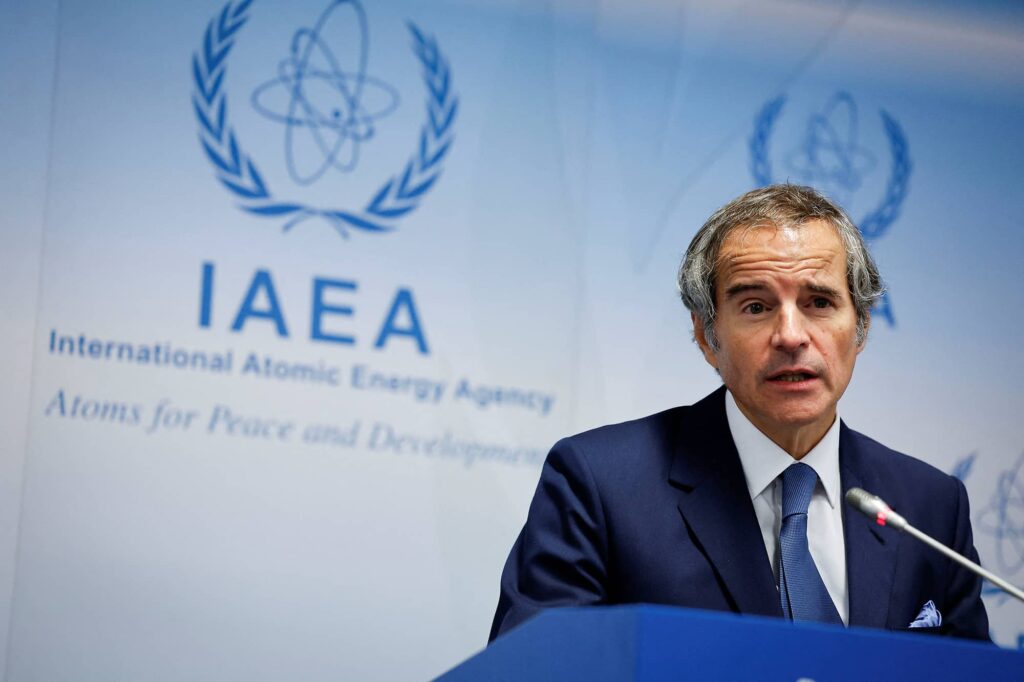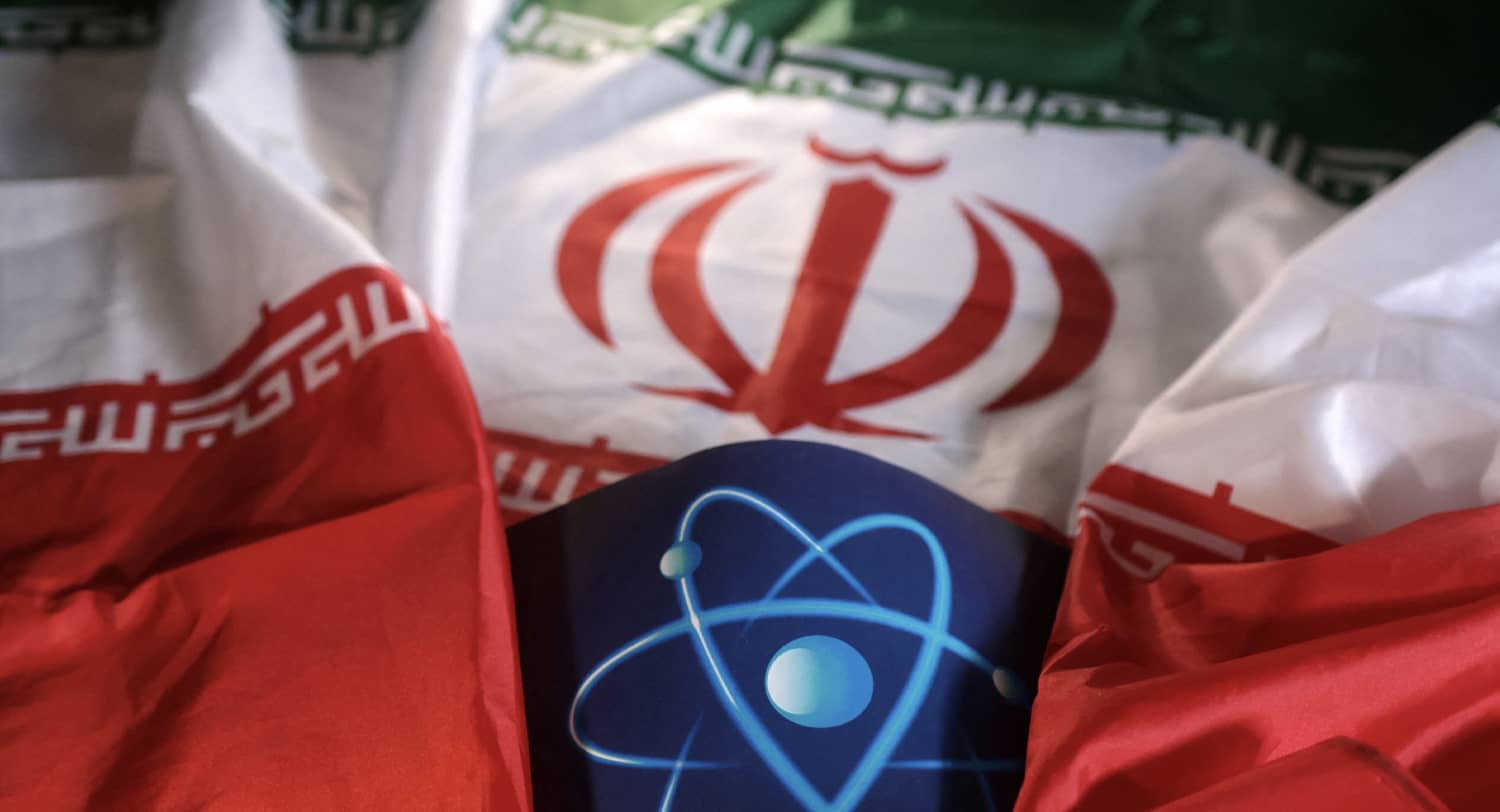The Iranian missile and drone attack on Israel in the early morning hours of April 14 serves as a reminder of Tehran’s dangerous role in Middle Eastern affairs. Imagine the impunity with which Iran might act if it felt emboldened by possession of a nuclear umbrella or an ability to retaliate with nuclear weapons. The International Atomic Energy Agency (IAEA) renewed recently its concerns over this prospect.
Iran’s Failure to Comply with its Nuclear Agreements
The IAEA has tried since 2003 to verify the declarations which Iran was required to make under the comprehensive safeguards agreement it signed. Yet after 20 years, Iran still has not permitted access either to its nuclear sites for inspection or to relevant Iranian technical experts for interviews.
Rafael Grossi, the IAEA director general, has repeatedly raised concerns about the course and purpose of Iran’s nuclear program, most recently at the IAEA board of governors meeting November 22, 2023. In response, Mohammad Eslami, president of the Atomic Energy Organization of Iran, warned there would be no further transparency until sanctions on Iran are lifted.
Western intelligence officials have continued to state, with due caution, that there is no conclusive evidence as yet that Iran’s leader Ali Khamene’i has decided to cross the last threshold and build a nuclear weapon. But as Mr. Grossi pointed out, owing to the lack of information, it could be too late someday for the international community to detect and block such a “breakout” action, when such a decision is actually made by Iran.
Paths to a Breakout
Iran has sufficient stocks of highly enriched uranium to permit a speedy breakout. Prior to 2003, Iran had processed hundreds of kilograms of uranium metal – not yet enriched, but accumulated secretly, without reporting these nuclear materials to the IAEA as required by the safeguards agreement.
In addition, according to IAEA reports, Iran acquired a relevant Soviet document from a clandestine proliferation network, describing the steps required to produce uranium metal components for a nuclear weapon.
The secrecy of these activities, and the effort to obtain weapons designs, both indicate that very early on, Iran was in breach of its undertaking – under the Non-Proliferation Treaty – not to pursue a military program. More recently, Iran’s accumulation of fissile material puts it within a short leap to the level of enrichment of 94 percent or more of uranium 235, which is the isotope needed for a chain reaction and a bomb.
To develop a nuclear weapon using uranium enrichment, the Iranians built an extensive infrastructure of centrifuges, gradually raising the level of enrichment well beyond what would be needed for any civilian purpose. They accepted temporary limitations on enrichment under the Joint Comprehensive Plan of Action in 2015, which stipulated maximum enrichment of 3.17 percent. After the US withdrew from the Plan of Action in 2018, Iran resumed enrichment at levels clearly indicating its intentions, enriching first to 5 percent (July 2019), then to 20 percent (January 2021) and finally to 60 percent (April 2021).
Iran did reduce temporarily the production of 60 percent enriched uranium in the second half of 2023. But it is currently producing this grade of uranium at the rate of nine kilograms per month, sufficient to quickly bring it within range of possession of “weapon-grade uranium” (i.e., enriched to 94 percent).
Enrichment to 60 percent has no practical purpose, other than as a penultimate step to obtaining weapons-grade levels.

Iran’s Extensive Experience in Producing Uranium
Uranium enrichment is carried out by spinning in the centrifuges a gas, the uranium compound with fluoride. In order to make a bomb, the enriched uranium needs to be once again turned into uranium metal and tooled for bomb components. Since the establishment of Iran’s nuclear weapons-related programs, in the mid-1980’s, the Atomic Energy Organization of Iran has devoted substantial resources to produce uranium metal in secrecy, without reporting those efforts to the IAEA as required by its safeguards agreement. IAEA investigations revealed that as early as the 1980’s, several kilograms of uranium metal were produced. In the early 1990s, 400 kilograms of uranium fluoride were obtained from a foreign country and processed into uranium metal. Thus, the technology necessary for tooling a bomb has thus been within Iran’s reach for decades.
In February 2024, Iran began building a fourth research reactor in Isfahan. Such a reactor will require advanced nuclear fuel, which the manufacturing process of uranium metal can produce as an interim step. Given Iran’s extensive experience in uranium metallurgy, this could theoretically be used as cover to make fuel enriched to 80-90 percent for the reactor under construction.
Once Iran Decides to Breakout, It Could Happen Within Six Months
The existing stockpiles of 20 percent and 60 percent enriched uranium offer attractive options for a quick breakout. Alarmingly, such a step would be difficult to detect by the technical means used by Western intelligence agencies: the enrichment installation needed for the one, decisive last leap would require less than 1,000 advanced centrifuges, which can be put to work in a small and relatively easily hidden floor space. The necessary workshop for uranium conversion to metal, and machining of weapon components, would be even smaller. This will make such installations difficult to find when located in secret industrial locations, or in secure facilities underground.
The Iranians have had access to a basic design of a warhead for years. A well-designed device would require, depending on the explosive yield sought, at least 15 kilograms of weapons grade uranium and thus, taking into account manufacturing losses, about 18 kilograms would be needed.
In short, by using two sets of its existing IR-6 cascades with four cascades with 164 centrifuges in each, Iran can produce what is necessary for a nuclear military capability, once the final decision is taken in Tehran. This can be computed as follows:
Installation 1 using 140 kilograms of 60 percent enriched uranium could produce enough weapons grade uranium for four nuclear weapons within about 30 days for each warhead. Thus, components for four bombs could be available after 130 days.
Installation 2 using 650 kilograms of 20 percent enriched uranium could produce enough for four nuclear weapons. In that case, components would be available for the first weapon after 60 days, and for all four within150 days.
If other components, explosives, and electronics are manufactured in parallel, or have already been stocked before the actual decision on the breakout is made, an Iranian deterrent with eight nuclear warheads is achievable in half a year’s time.
Next Steps
In December 2022, President Biden privately remarked that the 2015 Joint Comprehensive Plan of Action was “dead,” amidst Iran’s efforts to ramp up production of highly enriched uranium.
If there is to be a new nuclear deal with Iran, it would need to cover all three elements of a nuclear weapons program – production of fissile material, weaponization, and means of delivery using ballistic and cruise missiles. It would also need to include a fourth element – credible means of enforcing Iran’s undertakings. In addition, and without regard to the scope of Iran’s enrichment program, it is time to implement as much as possible a real-time accounting system at uranium enrichment plants, as is the case in the monitored plutonium processing plants in Japan (See Book of Abstracts).
Negotiators need to be prepared to manage further provocations by Iran, which could break the present publicly established red lines, such as no enrichment above 60 percent. It would be extremely dangerous for America and the free world to dash to a new agreement – offering further compromises over proliferation goals. Advocates of a compromise might argue (as they did in the past) that such a deal is “better than nothing.” But it would in fact be very dangerous to reward Iran’s breach of its commitments.
Given the size of Iran’s fissile material stockpiles, the calculations above about an Iranian nuclear deterrent in six months time, and the indications of work on weapon design, the message is clear. Unless Iran is stopped soon, the breakout to a bomb will be very difficult to detect and equally difficult to destroy. Therefore the demands on Iran must be backed not only by sanctions but also by the willingness to take military action. Several key facilities must either be dismantled though a monitoring regime or destroyed militarily for Iran’s nuclear weapons project to be brought to a real halt this time.



